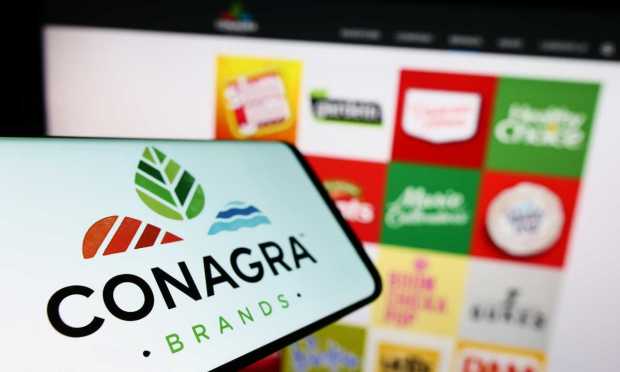Conagra: Inflation Extends Effects of Stay-at-Home Economy on Food Spending

Packaged food brands are benefitting from consumers’ ongoing preference for food at home post-quarantine, prompted by inflation.
Consumer-packaged goods (CPG) company Conagra Brands, parent of Slim Jims, PAM, Reddi Wip and many others, spoke to this trend Thursday (Jan. 5) while reporting its second-quarter fiscal 2023 financial results. The company noted that consumers’ price anxieties have extended the pandemic’s effect on their food spending habits past the point when one would have expected to see normalization.
“There was a trade-down into at home eating during COVID, and that has not fully reverted to away-from-home, because the prices of away-from-home have gone up so high that it’s a better value to continue to eat in-home, as people are trying to stretch their household balance sheet,” Conagra CEO Sean Connolly told analysts on a call. “And we are the beneficiary of that.”
Indeed, PYMNTS research supports the claim that consumers are seeking more affordable ways to get their food needs met. Research from PYMNTS’ study “Consumer Inflation Sentiment: Inflation Slowly Ebbs, but Consumer Outlook Remains Gloomy,” which drew from an August survey of 2,169 consumers, found that 78% expect to eat at home more often to save money.
Plus, Connolly noted that there has been additional trade-down “within grocery,” highlighting consumers’ shift to private-label offerings “in certain categories,” especially those that are more or less interchangeable regardless of brand name. He argued that the company is largely protected from this shift, given that its products tend not to fall under that umbrella.
“Those categories, almost always tend to be categories that are more highly commoditized,” Connolly said. “Things like, in food, cooking oil. Outside of foods, things like ibuprofen. When the consumer knows it’s a single-ingredient product, and one is a lot cheaper than the other, [it’s] easier to make the trade-down.”
Noting this change, the food company has been backing out of those categories over “the last few years,” shifting away from selling cooking oils, peanut butter and other such “more commoditized” items.
Indeed, PYMNTS research reveals that a significant share of grocery shoppers, but not the majority, has been trading down. Findings from that same Consumer Inflation Sentiment study revealed that 37% of consumers report having purchased lower-quality items in response to inflation.
Notably, food-at-home prices have actually increased more than food-away-from-home prices, though the latter remains the more expensive option by a considerable margin. Data from the U.S. Bureau of Labor Statistics (BLS) revealed that in November, the most recent month on record, grocery prices increased 12%, while restaurant prices increased 8.5%.
Research from PYMNTS’ study “New Reality Check: The Paycheck-to-Paycheck Report: The Inflation Edition,” created in collaboration with LendingClub, which drew from an August survey of nearly 3,500 U.S. consumers, found 69% have noticed a “very or extremely considerable” increase in the price of food from grocery stores in the past year, and 51% said the same of food from restaurants.
Plus, consumers feel the impact of this inflation even more acutely.
As PYMNTS’ Karen Webster pointed out in a feature last month, “Seven months of consumer data as reported by PYMNTS show that consumers consistently say that the prices they pay for food, gas, clothing and household essentials are more than twice as high as what government data reports.”
